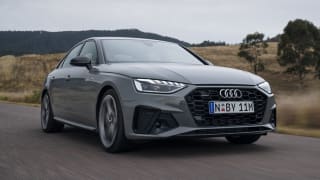To be precise the variant we’re looking at here is the IS 300h Luxury. It’s the base IS trim with the hybrid powertrain and it wears a before on-road costs (MSRP) of $64,500.
Base car or not, the new IS is very well specified. Now standard are 18-inch alloys (up from 17s), full LED headlight clusters, eight-way power adjustable front seats, dual-zone climate control, 10-speaker audio system, and importantly a brilliant new 10.3-inch multimedia screen with widescreen Apple CarPlay, Android Auto, built-in navigation, and DAB+ digital radio support.

Keyless entry and push-start ignition also continue to be offered, as well as a leather-look interior trim which in our car was in a rather contrasting 'Ochre' colour option.
Our IS 300h was also fitted with the creatively named ‘Enhancement Pack 1’ which adds an openable moonroof for $2000. The significantly more expensive ‘Enhancement Pack 2’ ($5500) adds the moonroof alongside 19-inch alloys, upgraded LED headlights, interior ornamentation, scuff plates, a panoramic reversing camera, 17-speaker premium audio, ‘leather-accented’ interior trim, ventilated front seats, and an electric rear sunshade.

These packs are seemingly largely unnecessary but are also very cheap for a brand at the premium end of the market.
Lexus has made pretty much all of its high-end active safety equipment standard on this base ‘Luxury’ for 2021, alongside some previously unavailable tech which we’ll take a look at in the safety section of this review.
At this price the Lexus IS 300h goes into battle against the Mercedes-Benz C 200 ($66,900), BMW 320i ($70,900), Audi A4 35 TFSI ($55,900), and the ever-looming threat of Hyundai’s Genesis, which offers its similarly-sized G70 in base form at $59,300.
Some of these base-spec rivals are cheaper, some are more expensive, but did you notice none of them are hybrids?
Access to Toyota’s affordable and popular hybrid drive is a real point of difference for the Lexus brand, and we expect it’s a key drawcard for the loyal customer base. More on that later.
























